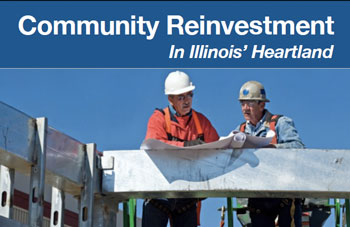Office of Surface Mining Reclamation and Enforcement
Administrative Record, Room 252 SIB
1951 Constitution Avenue, NW
Washington, DC 20240
RE: Docket ID: OSM-2010-0018, Proposed Stream Protection Rule,
80 Fed. Reg. 44436 (July 27, 2015)
The proposed stream protection rules should be implemented, and in addition, appropriate requirements that would mandate full compliance with the Clean Water Act should be enacted. Moreover, material damage produced from mining should include not only water resource damage, but total economic loss to coalfield citizens.
There are 2 active coal mines near the homes of Citizens Against Longwall Mining members. Shay 1 Mine in Carlinville, Illinois and Deer Run Mine in Hillsboro, Illinois. Both mines have contaminated water resources, damaged farmland and diminished air quality.
Shay 1 Mine, the prior Monterey 1 Mine owned by Exxon-Mobil, was purchased by Chris Cline/Foresight Energy Group and approved in 2009 for active coal production. Monterey 1 Mine had contaminated groundwater and off-site surface waters for many years due to leakage from 2 coal slurry impoundments. It is unacceptable that the water violations did not prevent the Illinois Department of Natural Resources/Office of Mines and Minerals from approving the permit that allowed additional coal slurry to be placed into the offending impoundments.
IDNR/OMM proceeded over time to approve importation of coal ash and to establish underground coal slurry injection at Shay 1 Mine. The unacceptable contamination issues still exist and this has resulted in the Attorney General’s Office decreeing a trench assembly to be constructed to facilitate the pumping of contaminated water for treatment prior to discharge. This has not been established yet, but is planned.
There is a pending permit (Revision 11 of Permit 56) that would expand Shay 1 Mine by 10,015 acres. Many residents in Macoupin County are very concerned about the proposed plan to room and pillar mine under the 2 Gillespie Lakes that are the only drinking water resources for thousands of residents. IDNR/OMM routinely rubber stamps coal mine permit applications regardless of citizens’ objections and risks. Citizens are legitimately concerned that 40-50 years later there will be subsidence with no bonding available to compensate for damage. They have already lost an almost newly built school due to subsidence from prior coal mining. The coal operator that produced the subsided mine voids was no longer in business. The legacy costs of coal are not addressed for communities that have unplanned subsidence and ground water damage that will occur for future generations.
Deer Run Mine is also owned by Chris Cline/Foresight Energy with recent financial holdings by Robert Murray Energy. This longwall mine is located in the City of Hillsboro, Illinois with the coal processing plant next door to Hillsboro Hospital, a nursing home, and a day care center. The mine discharges into Structure 5 that flows into Central Park Creek and meanders through Hillsboro past the Middle and High Schools. The chemical content, concentrations, and total accumulation from the mine discharge are not known, but the electrical conductivity of water in Central Park Creek is high and at unacceptable levels. Water quality standards are seriously not being protected with the present regulations as applied in Illinois.
The damage to farmland by subsidence from longwall mining has not only been a nonissue, but the proposed methods to mitigate the 5-6 feet sunken areas are absent from approved Permits 399, Significant Revision 1 of 399, and Renewal of 399, and Permit 422 . There are still no proposed drainage plans after 7 years beyond the promise that these problems will be managed. IDNR/OMM ignored the Montgomery County Soil and Water Conservation’s concerns about drainage issues from subsidence and its suggestion that the first impoundment be relocated out of the watershed of Hillsboro Lake, a public drinking water source. Long term, longwall mining will severely affect the agricultural industry in Illinois since coal is located in two/thirds of the state.
One of the most dangerous legacies in Montgomery County is the permanent placement of the coal slurry impoundments in the community. Hundreds of acres of cropland are lost to coal slurry impoundments that can leak, erode coal dust, and fail over time. There was no risk assessment in determining the location of Deer Run Mine’s second impoundment that upon failure will inundate the City of Hillsboro to the west, Schram City to the north, several major streams and hundreds of acres of farmland to the south, and the first coal slurry impoundment to the east. This inundation threat and forever risk to several communities reflect the tragic, inappropriate, and harmful control coal has on our regulatory agencies.
Through manipulation by the coal industry and a lack of enforcement by regulatory agencies, there is a failure of proper protection of coalfield communities. The fact that under SMCRA the Clean Air Act is not enforced and fugitive emissions are a nonissue is an insult to the health and development of a community. The health damage from particulate matter alone is well established, but coal dust has harmful metals and carcinogenic polycyclic aromatic hydrocarbons that endanger health even more. Coalfield citizens tragically do not have their right to a healthful life as should be ensured and protected by regulatory agencies.
If coal mining is to mitigate its damage in the U.S., the health, safety, and financial well being of communities must be protected by federal mining laws and enforced by state regulators. Stronger enforcement of SMCRA is essential for the quality of life in communities and the continued extraction of coal.
Thank you for your many efforts and for proposing the new stream protection rules.

